H. Malatesh Kumar
H. Malatesh Kumar is a senior officer for IT and databases, based in India.
H. Malatesh Kumar is a senior officer for IT and databases, based in India.
Alberto Chassaigne has 27 years of experience working in maize seed systems, maize breeding, agronomy and farmer outreach. Since February 2022, he is the Maize Germplasm Bank Curator focusing on the conservation, access to and benefit sharing of the enhanced use of germplasm. As a Maize Seed Systems Specialist, he works focusing primarily on promoting commercial seed production and enhanced adoption of maize hybrids and OPV, developing seed production research, capacity building and scaling production from Breeder Seed to Certified Seed. Since 2013 he has served 73 seed companies and registered 95 CIMMYT varieties in Mexico, and advised the public and private sector in Haiti, Colombia and Peru.Chassaigne holds a PhD in Seed Production from Colegio de Postgraduados, Mexico, a PhD in Agricultural Science and an MSc. in Agronomy from the Central University of Venezuela, and an additional degree in Agricultural Engineer.
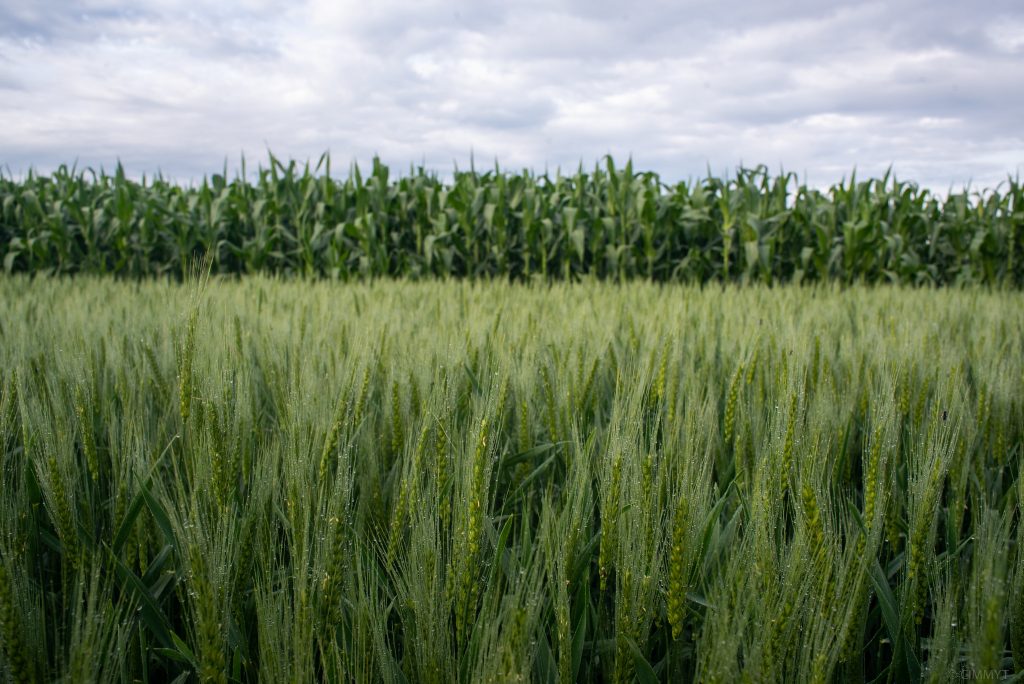
The first meetings of the Accelerating Genetic Gains in Maize and Wheat for Improved Livelihoods (AGG) wheat and maize science and technical steering committees — WSC and MSC, respectively — took place virtually on 25th and 28th September.
Researchers from the International Maize and Wheat Improvement Center (CIMMYT) sit on both committees. In the WSC they are joined by wheat experts from national agricultural research systems (NARS) in Bangladesh, Ethiopia, Kenya, India, and Nepal; and from Angus Wheat Consultants, the Foreign, Commonwealth & Development Office (FCDO), HarvestPlus, Kansas State University and the Roslin Institute.
Similarly, the MSC includes maize experts from NARS in Ethiopia, Ghana, Kenya and Zambia; and from Corteva, the Foundation for Food and Agriculture Research (FFAR), the International Institute for Tropical Agriculture (IITA), SeedCo, Syngenta, the University of Queensland, and the US Agency for International Development (USAID).
During the meetings, attendees discussed scientific challenges and opportunities for AGG, and developed specific recommendations pertaining to key topics including breeding and testing scheme optimization, effective engagement with partners and capacity development in the time of COVID-19, and seed systems and gender intentionality.
Discussion groups noted, for example, the need to address family structure in yield trials, to strengthen collaboration with national partners, and to develop effective regional on-farm testing strategies. Interestingly, most of the recommendations are applicable and valuable for both crop teams, and this is a clear example of the synergies we expect from combining maize and wheat within the AGG project.
All the recommendations will be further analyzed by the AGG teams during coming months, and project activities will be adjusted or implemented as appropriate. A brief report will be submitted to the respective STSCs prior to the second meetings of these committees, likely in late March 2021.
Thatoji Kiranmayi is a program administrator with CIMMYT’s Global Maize Program, based in India.
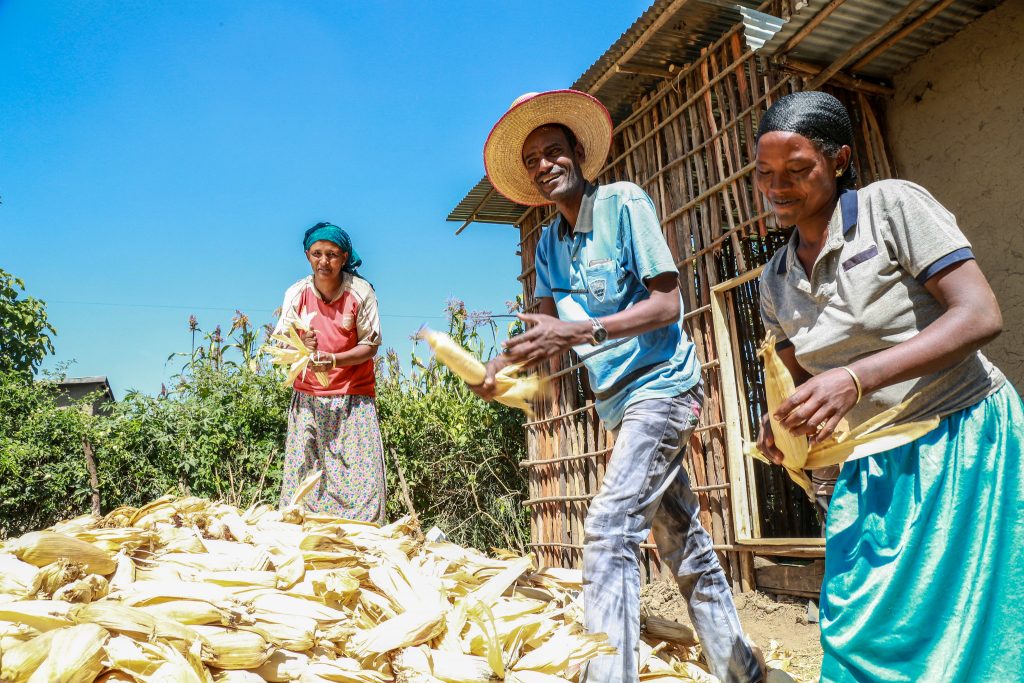
The current COVID-19 pandemic — and associated measures to reduce its spread — is projected to increase extreme poverty by 20%, with the largest increase in sub-Saharan Africa, where 80 million more people would join the ranks of the extreme poor. Accelerating the process of delivering high-quality, climate resilient and nutritionally enriched maize seed is now more critical than ever.However, developing these varieties is not a rapid or cheap process. Over the course of five years, researchers on the Stress Tolerant Maize for Africa (STMA) project developed a range of tools and technologies to reduce the overall cost of producing a new high yielding, stress tolerant hybrids for smallholder farmers in the region.
Maize breeding starts with crossing two parents and essentially ends after testing their great-great-great-great grandchildren in as many locations as possible. This allows plant breeders to identify the new varieties which will perform well in the conditions faced by their target beneficiaries — in the case of STMA, smallholder farmers in Africa. In other parts of the world, new tools and technologies are routinely added to breeding programs to help reduce the cost and time it takes to produce new varieties.
Scientists on the STMA project focused on testing and scaling new tools specifically for maize breeding programs in sub-Saharan Africa and began by taking a closer look at the most expensive part of the breeding process: phenotyping or collecting precise information on plant traits.
“Within a breeding program, phenotyping is the single most costly step,” explains CIMMYT molecular breeder Manje Gowda. “Molecular technologies provide opportunities to reduce this cost.” The research team tested two methods to speed up this step and make it more cost efficient: forward breeding and genomic selection.
Speeding up a long and costly process
Two important traits maize breeders look for in their plant progeny are susceptibility for two key maize diseases: maize streak virus (MSV) and maize lethal necrosis (MLN). In traditional breeding, breeders must extensively test lines in the field for their susceptibility to these diseases, and then remove them before the next round of crossing. This carries a significant cost.
Using a process called forward breeding, scientists can screen for DNA markers known to be associated with susceptibility to these diseases. This allows breeders to identify lines vulnerable to these diseases and remove them before field testing.
Scientists on the STMA project applied this approach in CIMMYT breeding programs in eastern and southern Africa over the past four years, saving an estimated $300,000 in field costs. Under the AGG project, research will now focus on applying forward breeding to identify susceptibility for another fast-spreading maize pest, fall armyworm, as well as extending use of this method in partners’ breeding programs.
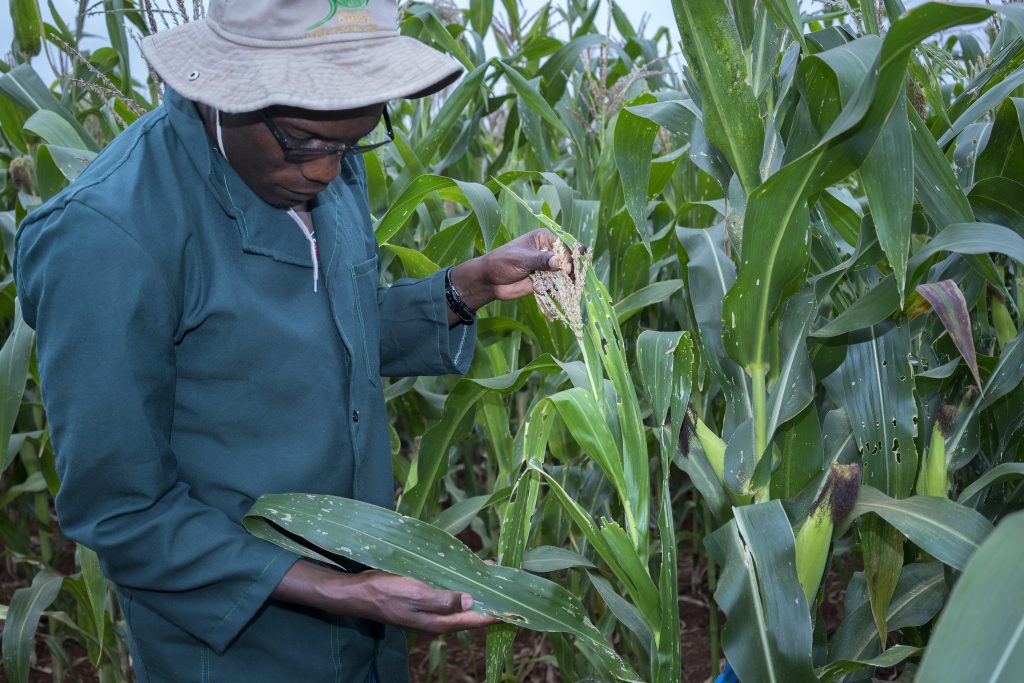
Forward breeding is ideal for “simple” traits which are controlled by a few genes. However, other desired traits, such as tolerance to drought and low nitrogen stress, are genetically complex. Many genes control these traits, with each gene only contributing a little towards overall stress tolerance.
In this case, a technology called genomic selection can be of service. Genomic selection estimates the performance, or breeding value, of a line based largely on genetic information. Genomic selection uses more than 5,000 DNA markers, without the need for precise information about what traits these markers control. The method is ideal for complicated traits such as drought and low nitrogen stress tolerance, where hundreds of small effect genes together largely control how a plant grows under these stresses.
CIMMYT scientists used this technology to select and advance lines for drought tolerance. They then tested these lines and compared their performance in the field to lines selected conventionally. They found that the two sets of resulting hybrid varieties — those advanced using genomic selection and those advanced in the field — showed the same grain yield under drought stress. However, genomic selection only required phenotyping half the lines, achieving the same outcome with half the budget.
Innovations in the field
While DNA technology is reducing the need for extensive field phenotyping, research is also underway to reduce the cost of the remaining necessary phenotyping in the field.
Typically, many traits — such as plant height or leaf drying under drought stress — are measured by hand, using the labor of large teams of people. For example, plant and ear height is traditionally measured by a team of two using a meter stick.
Mainasarra Zaman-Allah, a CIMMYT abiotic stress phenotyping specialist based in Zimbabwe, has been developing faster, more accurate ways to measure these traits. He implemented the use of a small laser sensor to measure plant and ear height which only requires one person. This simple yet cost effective tool has reduced the cost of measuring these traits by almost 60%. Similarly, using a UAV-based platform has reduced the cost of measuring a trait known as canopy senescence — leaf drying associated with drought susceptibility —by over 65%.
The identification of plants which are tolerant to key diseases has traditionally involved scoring the severity of disease in each plot visually, but walking through hundreds of plots daily can lead to errors in human judgement. To combat this, CIMMYT biotic stress phenotyping specialist LM Suresh collaborated with Jose Luis Araus and Shawn Kefauver, scientists at the University of Barcelona, Spain, to develop image analysis software that can quantify disease severity, thereby avoiding problems associated with unintentional human bias.
Plant breeders need uniform, or homozygous, lines for selection. With conventional plant breeding this is difficult: no matter how many times you cross a line, a small amount of DNA will remain heterozygous — having two different alleles of a particular gene — and reduce accuracy in line selection.
A technology called doubled haploid allows breeders to develop homozygous lines within two seasons. While this technology has been used in temperate maize breeding programs since the 1990s, it was not available for tropical environments until 10 years ago. In 2013, thanks to joint work with Kenyan partners at the CIMMYT Doubled Haploid facility in Kiboko, this technology was made available to African breeding programs. Now Vijay Chaikam, a CIMMYT doubled haploid specialist based in Kenya, is working towards reducing the cost of this technology as well.
The efforts begun by the STMA research team is now continuing under the Accelerating Genetic Gains in Maize and Wheat for Improved Livelihoods (AGG) project. As this work is carried forward, the next crucial step is ensuring that the next generation of African maize breeders have access to these technologies and tools.
“Improving national breeding programs will really drive success in raising maize yields in the stress prone environments faced by many farmers in our target countries,” says Mike Olsen, CIMMYT’s upstream trait pipeline coordinator. Under AGG, in collaboration with the CGIAR Excellence in Breeding Program, these tools will be scaled out.
The International Maize and Wheat Improvement Center (CIMMYT) is proud to partner with the Whole Grain Initiative in celebrating International Whole Grain Day on November 19, 2020.
In terms of diet and nutrition, ours is an age of contradiction. While populations in wealthy countries are faced with unprecedented levels of diet-related disease, close to 2 billion people globally remain food insecure. At the same time, global agriculture has an enormous role to play in the transition towards an environmentally sustainable future.
International Whole Grain Day 2020 is a good day to step back and consider the continued role of whole grains in the healthy, sustainable diets of today and tomorrow. Explore our content to learn what whole grains are, how we’re working to make whole grain wheat and maize even more nutritious, and discover some our favorite recipes.
In the first installment of The Cereal Serial, CIMMYT’s maize and wheat quality experts explain what whole grains are and why they are an important part of a healthy diet.
For a deeper dive into the subject, check out our explainer on whole grains: What they are, why they are important for your health, and how to identify them.
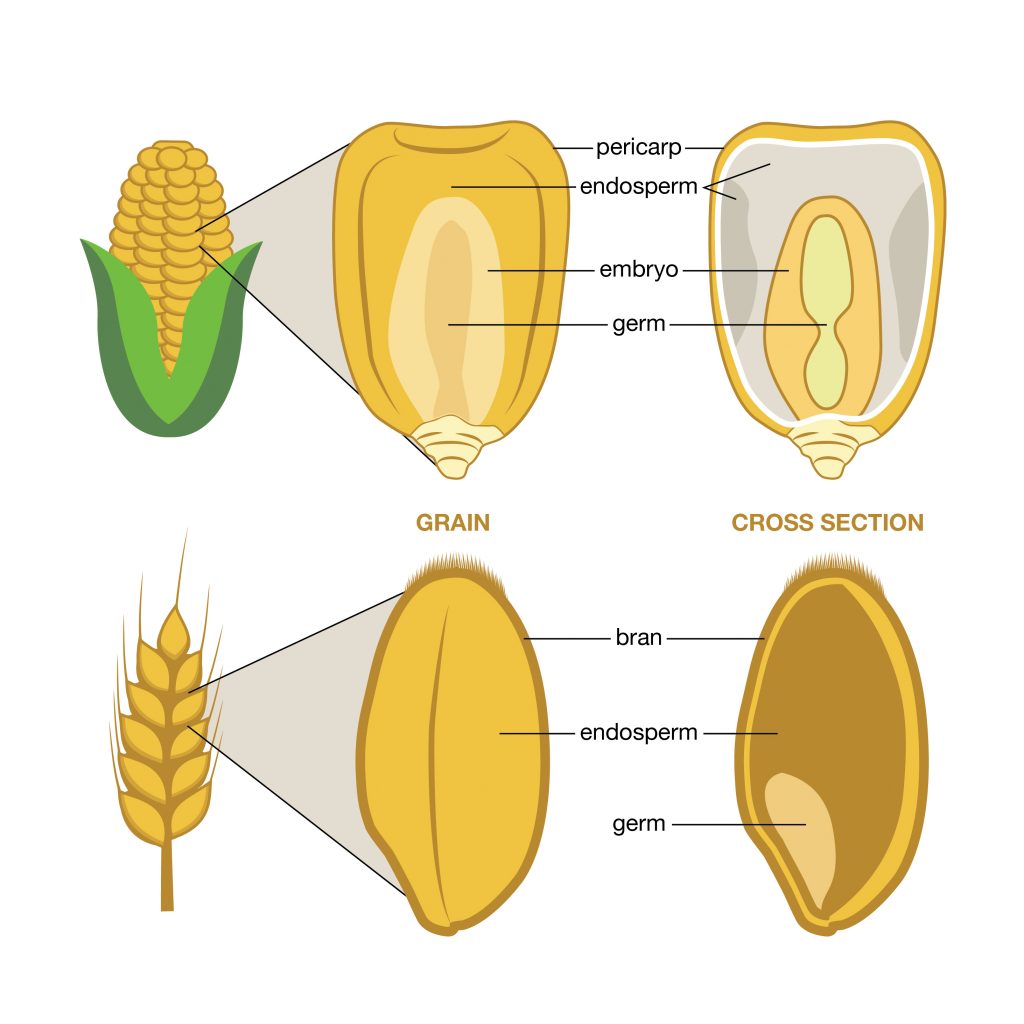
What do wholegrain foods look like around the world? We’ve curated photos of some delicious staples. View gallery.
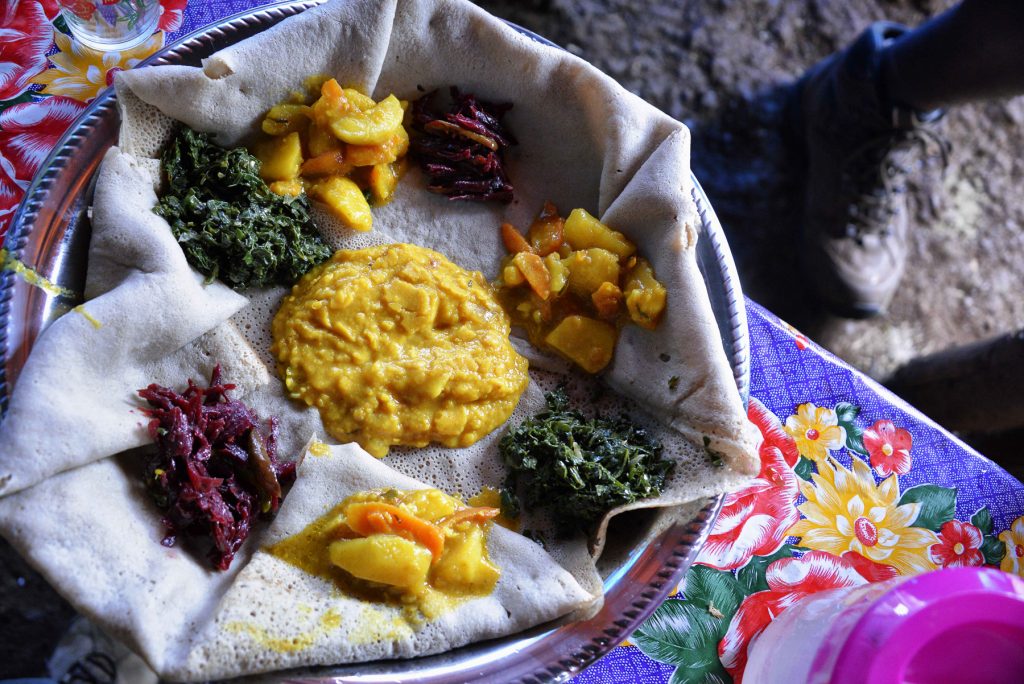
CIMMYT’s “A Grain a Day” cookbook highlights the big role maize and wheat play in diets around the world, and brings global cuisine to your own kitchen. (Note: not all recipes call for whole grains.) Learn more.
Join members of the Whole Grain Initiative, the FAO and global leaders on November 19 as they discuss the role of whole grains in meeting the “triple challenge” of ensuring global food security and improving the livelihoods of agri-food workers in an environmentally sustainable manner. Join the webinar: Building Healthy, Sustainable and Resilient Food Systems.
Interested in learning more about how CIMMYT is working to make grain-based diets healthier and more nutritious? Check out our archive of health and nutrition content.
Featured image: Little girl eating roti, Bangladesh (S. Mojumder/Drik/CIMMYT)
In the first installment of The Cereal Serial, CIMMYT’s maize and wheat quality experts Natalia Palacios and Itria Ibba explain what whole grains are and why they are an important part of a healthy diet. For a deeper dive into the subject, check out our whole grains explainer.
Share recipes and photos of your favorite whole grain foods by tagging @CIMMYT and using #choosewholegrains in your social media posts.
Passmore Kasere is a Field Auxiliary working with CIMMYT’s Global Maize Program in Zimbabwe.
The “double burden of malnutrition” refers to the seemingly paradoxical coexistence of obesity and undernutrition. It affects people whose diet consists primarily of “empty” calories: high-energy foods lacking in essential vitamins and minerals.
This project takes aim at both issues by combining improved agronomic practices with the use of biofortified maize varieties, to increase the nutritional value of maize, Zimbabwe’s most important, high-calorie staple food crop.
This project, whose full title is “Addressing malnutrition with biofortified maize in Zimbabwe: From crop management to policy and consumers”, will carry out on-station trials at Harare Research Station and Domboshava Training Centre, and conduct on-farm trials with 60 farmers in two wards in Murehwa district. These trials will help researchers predict the effect of bio + agro fortification at the national level. Project findings will be broadly disseminated through a well-defined stakeholder engagement strategy.
Objectives:
Chengetai Kadzere is a field auxiliary with CIMMYT’s Global Maize Program, based in Zimbabwe. His work involves preparation of seed shipments for local and international partners, generation of hybrids, OPVs and parent materials descriptor data, and management of demonstration sites for regional trials.
Patience Ndaruza is a field assistant with CIMMYT’s Global Maize Program, based in Zimbabwe.
At seed fair in Masvingo District, Zimbabwe, farmers browse numerous displays of maize, sorghum, millet, groundnuts and cowpeas presented by the seed companies gathered at Muchakata Business Centre.
The event — organized by the International Maize and Wheat Improvement Center (CIMMYT) as part of the R4 Rural Resilience Initiative — is promoting a range of stress-tolerant seeds, but there is a particular rush for the vitamin A-rich, orange maize on offer. Farmers excitedly show each other the distinctive orange packets they are purchasing and in no time all, this maize seed is sold out at the Mukushi Seeds stand.
“I first saw this orange maize in the plot of my neighbor, Florence Chimhini, who was participating in a CIMMYT project,” explains Dorcus Musingarimi, a farmer from Ward 17, Masvingo. “I was fascinated by the deep orange color and Florence told me that this maize was nutritious and contained vitamin A which helps to maintain normal vision and maintain a strong immune system.”
“I would like to grow it for myself and consume it with my family,” says Enna Mutasa, who also purchased the seed. “I heard that it is good for eyesight and skin — and it is also tasty.”
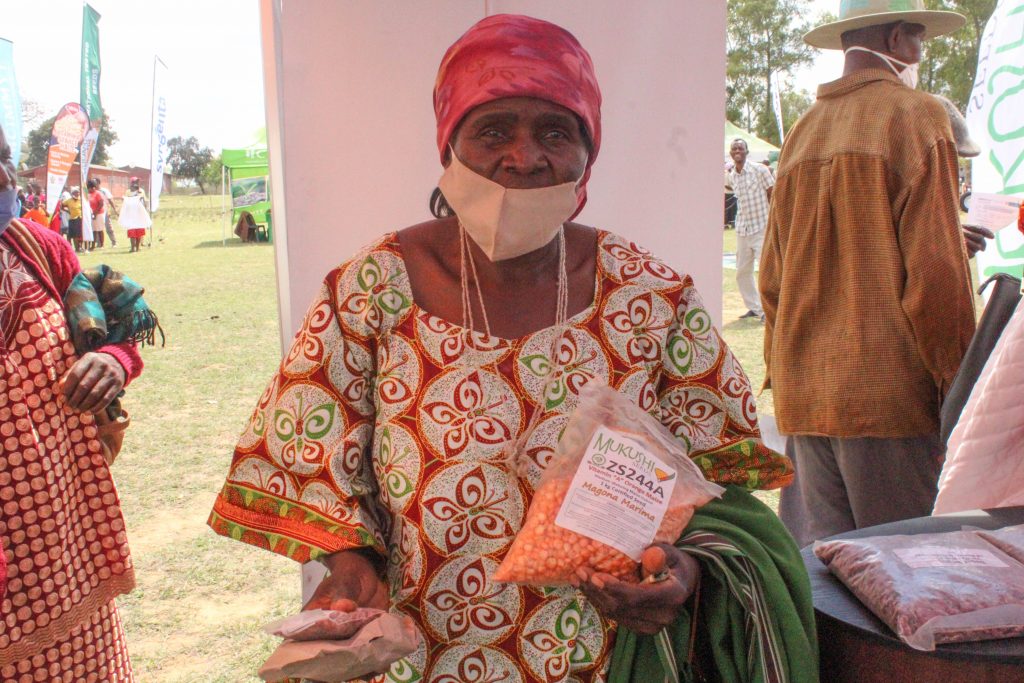
Knowledge transfer through mother trials
Florence Chimhini is one of ten farmers who has participated in the “mother trials” organized as part of the Zambuko/R4 Rural Resilience Initiative since 2018.
These trials were designed in a way that allows farmers to test the performance of six different maize varieties suited to the climatic conditions of their semi-arid region, while also growing them under the principles of conservation agriculture. Using this method, farmers like Chimhini could witness the traits of the different maize varieties for themselves and compare their performance under their own farm conditions.
An important outcome of the mother trials was a growing interest in new varieties previously unknown to smallholders in the area, such as the orange maize varieties ZS244A and ZS500 which are sold commercially by Mukushi Seeds.
“Recent breeding efforts have significantly advanced the vitamin A content of orange maize varieties,” says Christian Thierfelder, a cropping systems agronomist at CIMMYT. “However, the orange color has previously been associated with relief food — which has negative connotations due to major food crises which brought low quality yellow maize to Zimbabwe.”
“Now that farmers have grown this maize in their own mother trial plots and got first-hand experience, their comments are overwhelmingly positive. The local dishes of roasted maize and maize porridge are tastier and have become a special treat for the farmers,” he explains.
“Though not as high yielding as current white maize varieties, growing orange maize under climate-smart conservation agriculture systems can also provide sustained and stable yields for farm families in Zimbabwe’s drought-prone areas.”
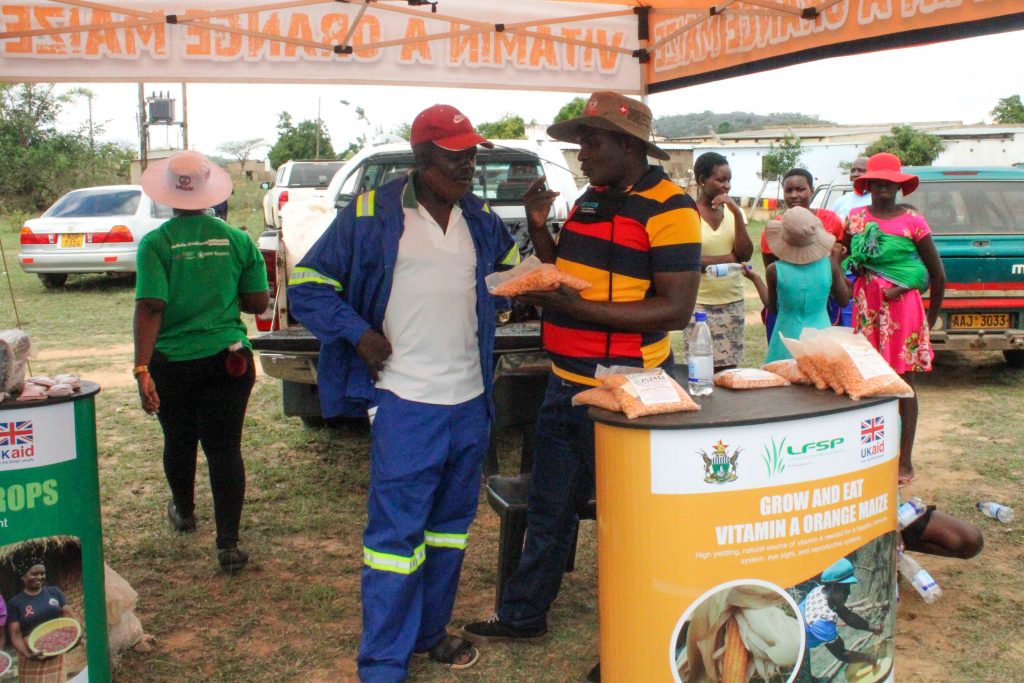
Addressing micronutrient deficiency
In Zimbabwe, at least one in every five children suffers from ailments caused by vitamin A deficiency, from low levels of concentration to stunting and blindness. The vitamin is commonly found in leafy green vegetables, fruits and animal products — sources that may be unavailable or unaffordable for many resource-poor households.
Staple maize grain, however, is often available to smallholder families and thus serves as a reliable means through which to provide additional micronutrient requirements through conventional biofortification. This allows people to improve their nutrition through the foods that they already grow and eat every day, says Lorence Mjere, a seed systems officer at HarvestPlus Zimbabwe.
The beta-carotene in orange maize gives it its distinctive orange color and provides consumers with up to 50% of their daily vitamin A requirements.
“Orange maize addresses hidden hunger in family diets by providing the much-needed pro-vitamin A which is converted to retinol upon consumption,” explains Thokozile Ndhlela, a maize breeder at CIMMYT. “In doing so, it helps alleviate symptoms of deficiency such as night blindness and poor growth in children, to name just a few.”
The success of the recent seed fairs shows that provitamin A maize is gaining momentum among smallholder farmers in Masvingo and its continued promotion will support all other efforts to improve food and nutrition security in rural farming communities of southern Africa.
India’s maize production area currently covers over 10 million hectares, with an annual production of about 25 million tons. Most of this crop is rainfed and therefore vulnerable to climatic shocks such as monsoon rains and associated abiotic and biotic constraints. Moisture availability is seldom adequate for rainfed maize, as the erratic or un-even distribution patterns of monsoon rains often causes intermittent drought, heat or excessive moisture/waterlogging at different crop growth stage(s). This is the main factor responsible for the relatively low productivity of rainfed maize – locally known as Kharif. Additionally, due to un-assured return, farmers often hesitate to invest in improved seed, fertilizers and inputs, which further contributes to poor yields.
In recent years the country’s tropical regions have experienced frequent and widespread drought, coupled with increased (day and night) temperatures during the main maize growing season, in addition to the scattered drought, heat and/or waterlogging that occur almost every year. The compound effects of multiple stresses during monsoon season is reflected in the low productivity of Kharif maize, which is usually less than half compared to irrigated (Rabi) maize.
In response to this, the “Improving rainfed (Kharif) maize productivity” project was established in collaboration with the All-India Coordinated Maize Improvement Program (AICMIP), with the aim of developing maize varieties with tolerance to drought, heat stress and waterlogging. This can play in important role in enhancing maize productivity in rainfed, stress-prone ecologies, and ultimately help boost national maize productivity and production.
Objectives:
Sudha Nair is a maize molecular breeder with CIMMYT’s Global Maize Program, based in Hyderabad, India.
James Gethi is a Maize Seed Systems Specialist with CIMMYT’s Global Maize Program, based in Zimbabwe.